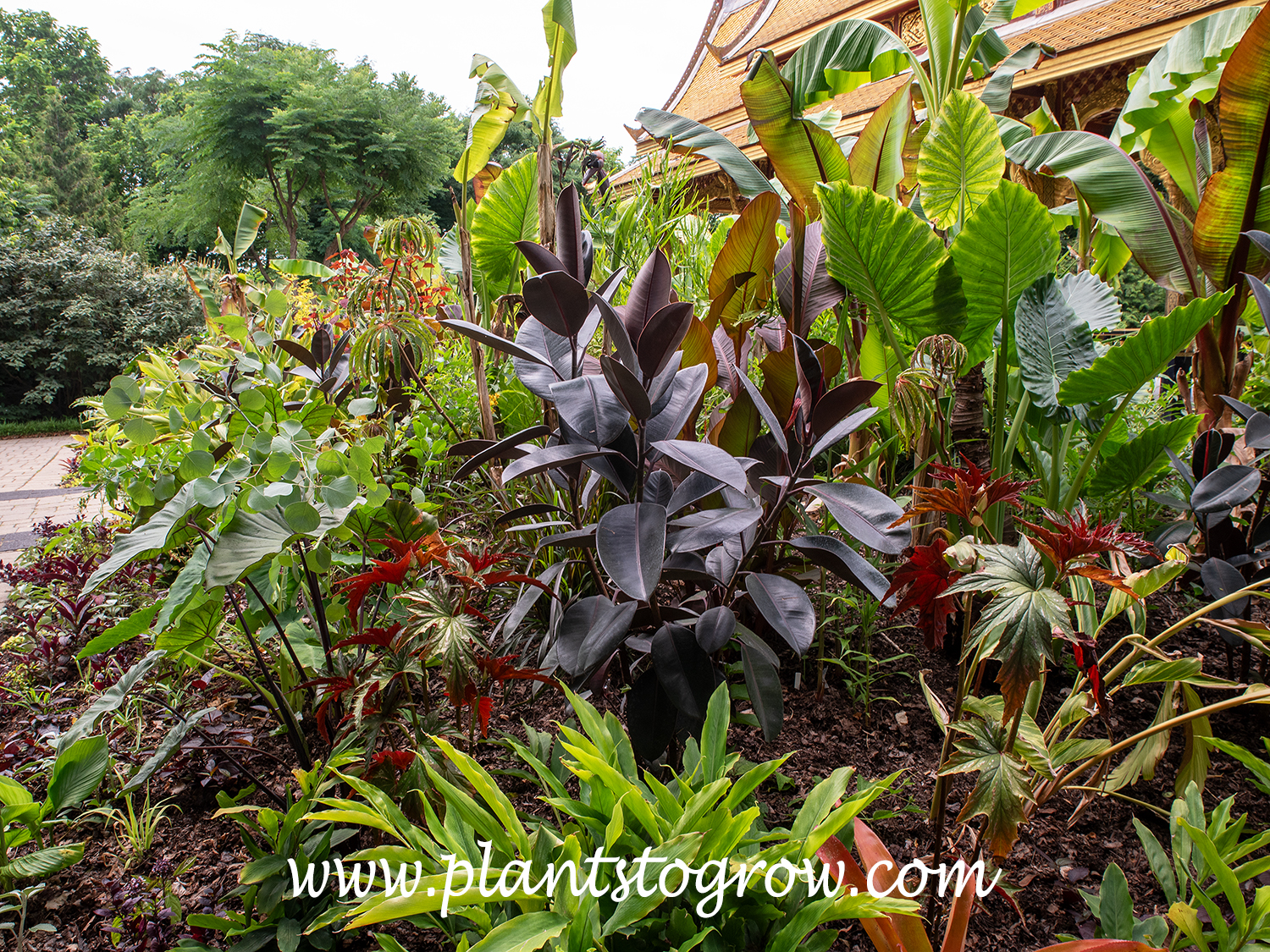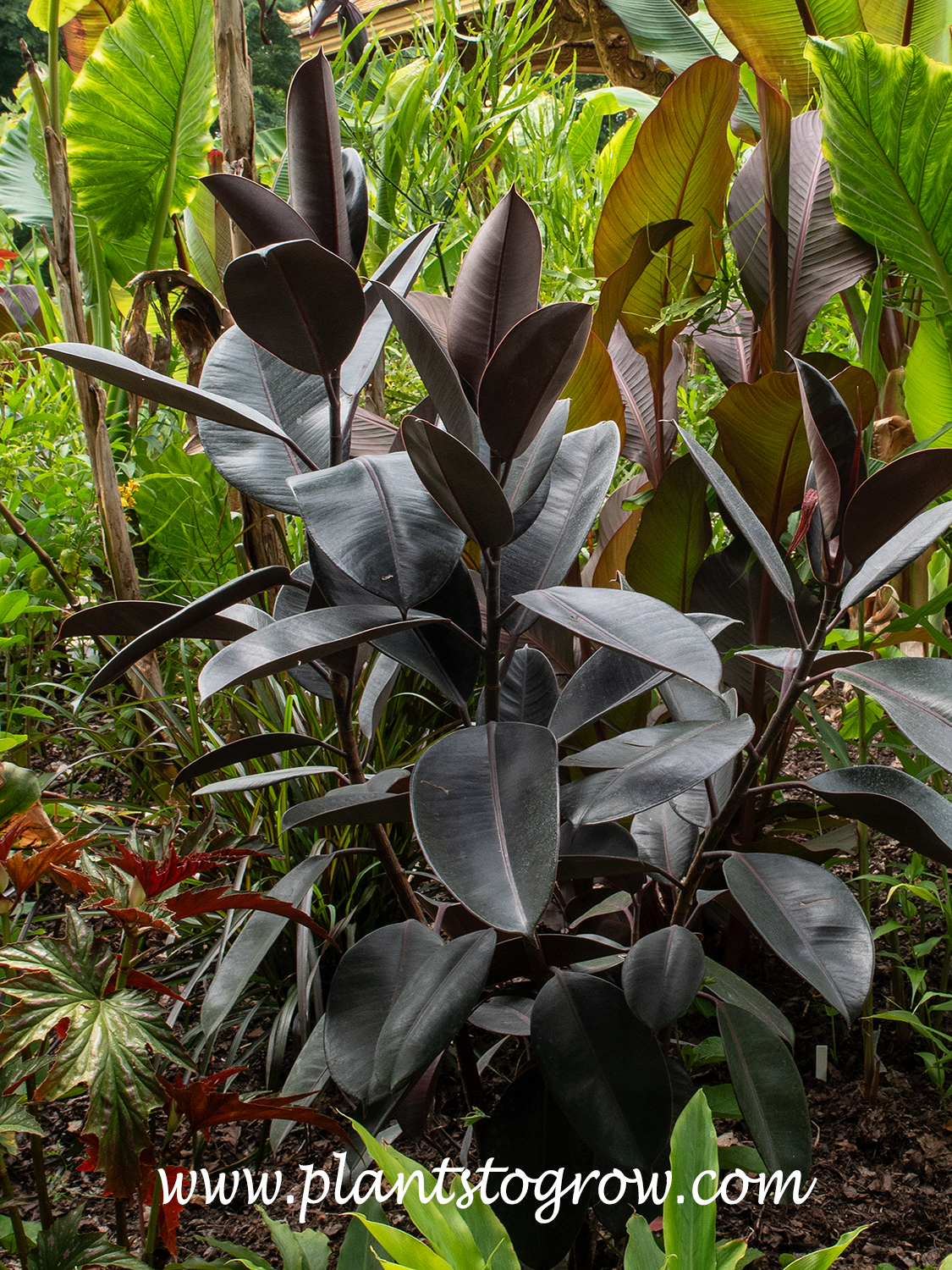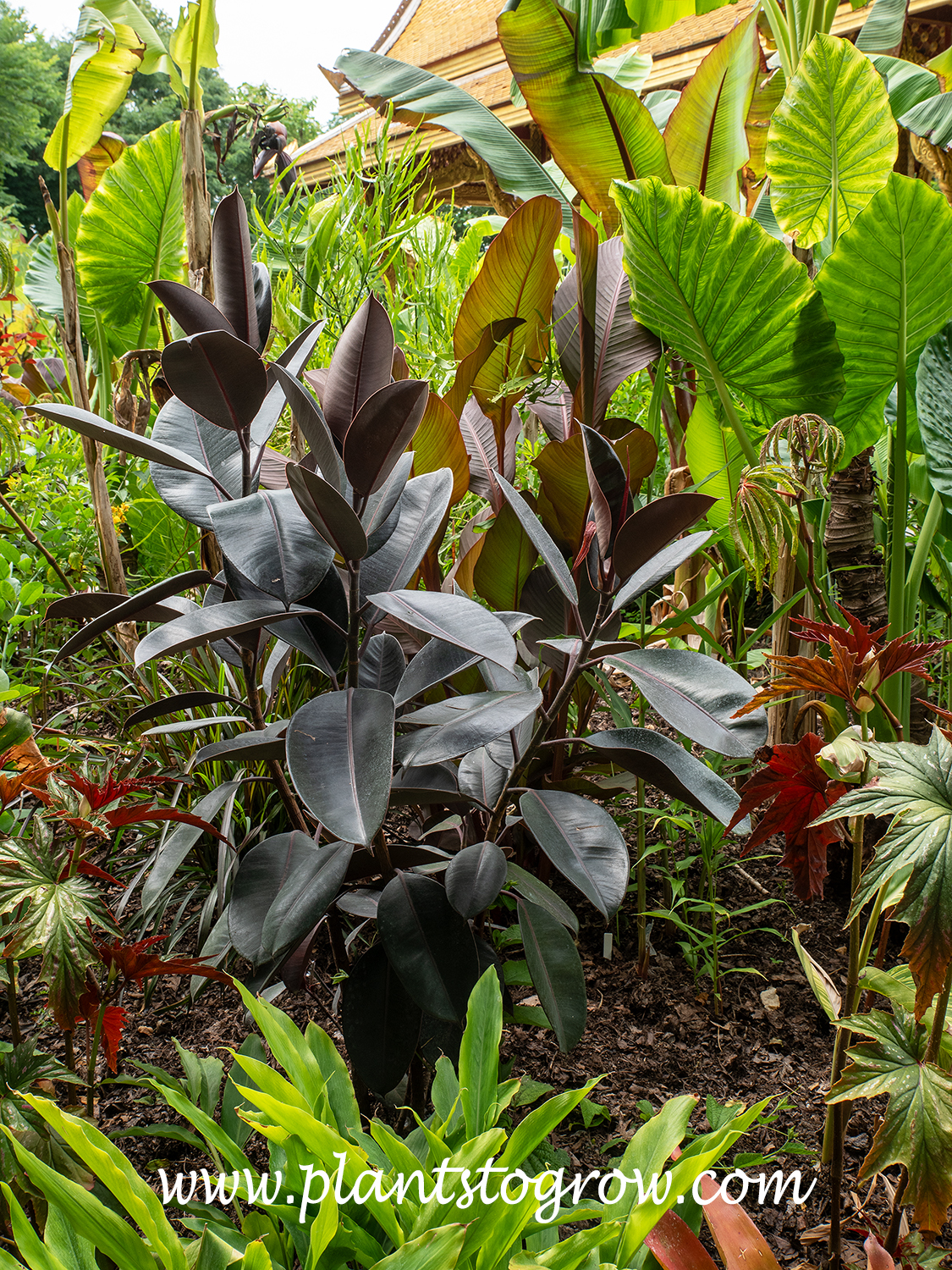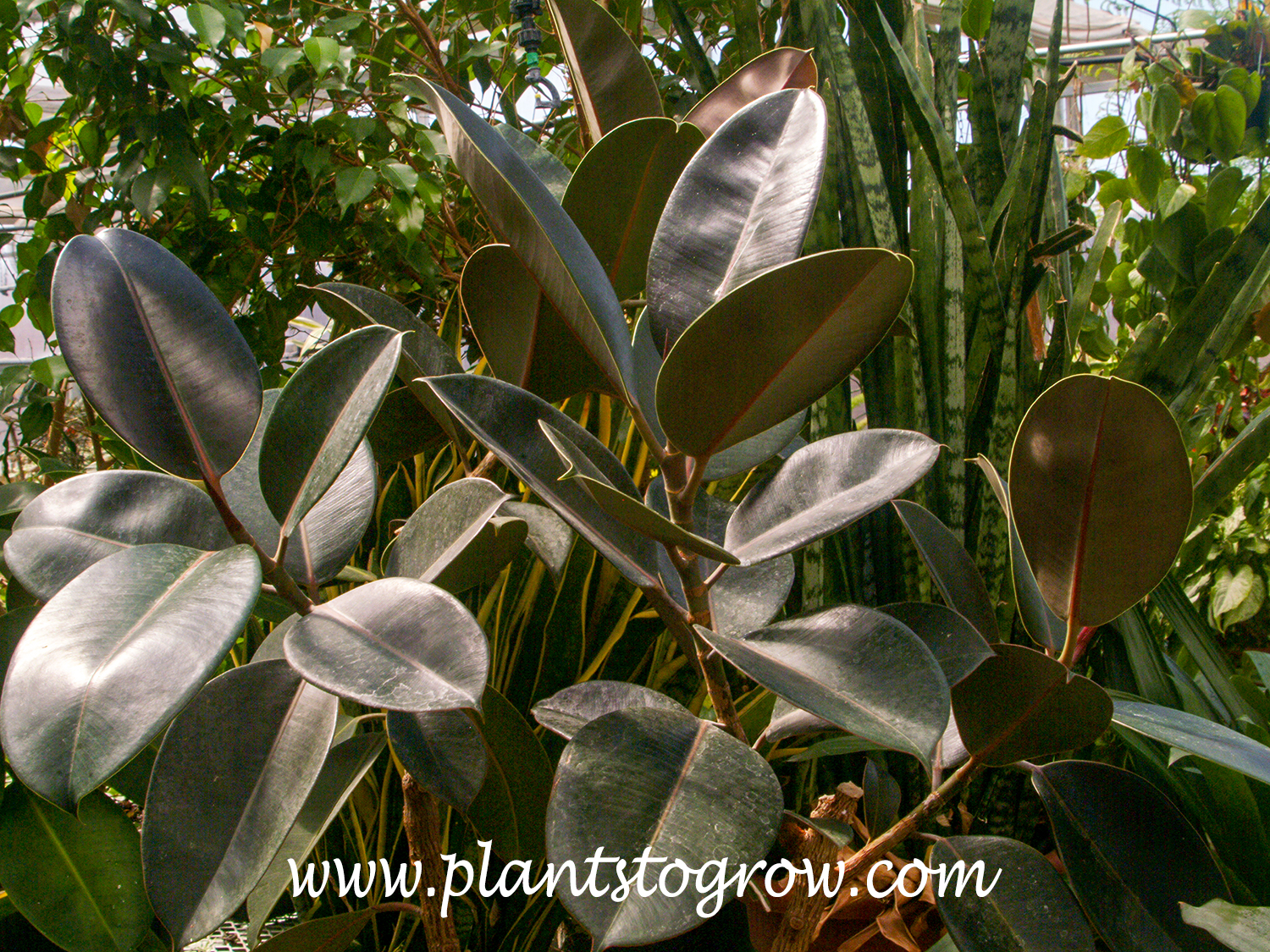| Description | Burgundy Rubber Tree (Ficus elastica) is a tropical tree used as a house plant in colder climates and a landscape plant in warmer regions. The leaves can be dark burgundy to green burgundy, depending on how much light it gets. |
|---|---|
| Plant Type | All Plants, Indoor Foliage |
| Hardiness Zone | tropical |
| Sunlight | bright indirect to moderate |
| Moisture | Approach dryness since overwatering is one of the main cultural practices that will kill this plant in. |
| Soil & Site | aveage |
| Growing Media | averge house |
| Temperature | Doesn't like cold drafts. |
| Leaves | The glossy color will be green-purple to dark purple, depending on the amount of light. |
| Stems | woody |
| Dimensions | 6-10 feet indoors to almost 100 feet in tropical climates. |
| Propagation | cuttings, air layering |
| Native Site | Native to the rainforests of India and South America. |
| Misc Facts | This plant produces a white sap that will ooze out of any cut or leaf that breaks off. This is not the main source of rubber that was used in tires. The sap from Hevea brasiliensis is the main source for rubber. |
| Author's Notes | I have seen this plant growing outside with deep, dark, burgundy leaves. The plants were getting bright morning light and shade from the hot mid-day light. This observation was made in zone #5 on more than one occasion. Rubber trees can be finicky to the growing conditions, and it may be necessary to move these plants around until they find the right growing conditions. I have seen plants flourishing in homes and others where the plant was a stick with a leaf or two. |
| Notes & Reference | #158-Plantepedia (Maggie Stuckey), #274-Site Authors' observations and growing experiences |

Cart




